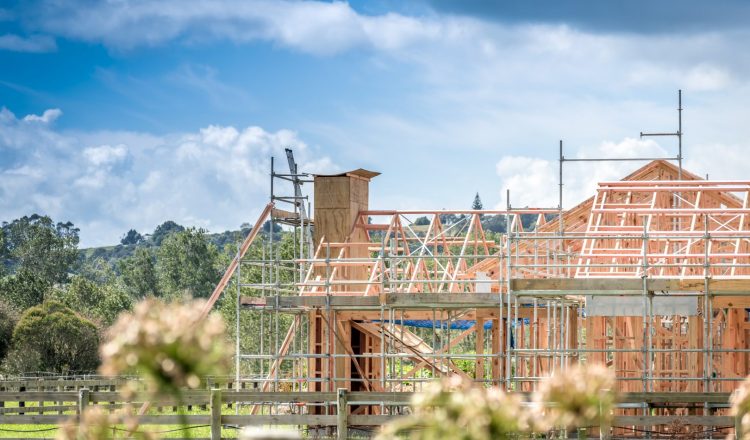The South Waikato không chỉ trở thành ước mơ của một nhà đầu tư bất động sản, mà còn là chủ doanh nghiệp, với giá bất động sản tăng cao hơn đạt mức tích cực.
Dữ liệu realestate.co.nz mới cho thấy giá nhà của huyện đã tăng 87% trong 10 năm.
Giá nhà trung bình đã đi từ 224.734 USD lên 419.739 USD, đây là bước nhảy vọt lớn thứ hai của Waikato sau Hamilton City, tăng 102 phần trăm từ 378.470 USD lên 763.446 USD.
Nhưng nó không chỉ là chủ sở hữu bất động sản với nụ cười trên khuôn mặt của họ. Sự gia tăng nhanh chóng cũng có tác động tích cực đến các doanh nghiệp.
Cư dân Tīrau, và chủ doanh nghiệp, Garry và Barbara Bettridge đã di dời từ Whanganui hai năm trước và chưa nhìn lại.
Barbara, người sở hữu cửa hàng thêu và thủ công MyStyle, và Garry, người điều hành cửa hàng sản xuất đồ trang sức của mình bên cạnh cô, cho biết doanh nghiệp đang bùng nổ khi có nhiều người đến thị trấn.
“ Tôi tìm thấy bởi vì Tīrau là một nơi mọi người đi qua, rất nhiều người đến từ Auckland hay Matamata, họ sẽ bỏ việc làm và đi đến bất cứ nơi nào họ đang đi và đón họ trên đường trở về hoặc lần sau họ ở đây, ” Gary nói.
“ Chúng tôi thực sự không biết gì về Tīrau trước khi chúng tôi đến đây, nhưng cả hai chúng tôi đều lớn lên và không muốn chuyển đến một thị trấn lớn.
“ Chúng tôi thực sự thích thú và không hối tiếc.”
Barbara không thể vượt qua mức giá bất động sản đang tăng nhanh như thế nào trong thị trấn. Trước khi chuyển đến đó họ đã mua một tài sản mà họ quyết định bán lại 18 tháng trước.
“ Chúng tôi đã trả 169.000 đô la, nó đã được trên thị trường trong ba năm, và chúng tôi đã bán nó với giá hơn 300.000 đô la trong vòng một tuần”, cô nói.
Đại lý bất động sản Tokoroa Richard Garner cho biết mặc dù tăng đáng kể, bất động sản vẫn được bán với giá hời so với các trung tâm khác.
“ Chúng tôi đã thấy một sự thay đổi lớn của những người đến từ Tauranga, Rotorua, Hamilton, Cambridge và Matamata,” ông nói.
“ Giá cả là một cái gì đó thực sự hấp dẫn và Tokoroa vẫn là trung tâm đối với các trung tâm đó.”
Garner, người trong bối cảnh nổi là trong quá trình mở một chi nhánh Ray White, cho biết nhà điều hành hơn cũng có nhu cầu nóng.
“ Bạn đang nhìn vào hơn 500.000 đô la cho một cái gì đó như thế bây giờ nhưng không lâu trước đây nếu chúng tôi liệt kê một cái gì đó với một năm trong đó, nó có lẽ là nông thôn, “Ông nói.
“ Chúng tôi chỉ tiếp tục lập hồ sơ mới với những gì mọi người sẵn sàng trả tiền.”
Ông nói trừ khi có nhiều đất được mở ra để phát triển, ông không thể thấy thị trường chậm lại.
Đối với người mẹ Cambridge Alanna Froebel, người đang muốn chuyển đến Tīrau để chồng cô có thể gần gũi hơn với công việc hơn, nhu cầu nhà ở cao đang làm cho việc tìm kiếm một thuê nhà không thể.
“ Nó là rất khó khăn. Có vẻ như không có nhiều quảng cáo và khi họ được quảng cáo có rất nhiều người áp dụng điều đó có nghĩa là tôi chưa bao giờ có thể xem được”, cô nói.
Cô nói rằng có một chú chó, mặc dù có tài liệu tham khảo phát sáng, làm cho nó trở nên khó khăn hơn.
“ Tôi đã liên lạc với tất cả các cơ quan bất động sản nhưng tôi chưa bao giờ nghe lại, “cô ấy nói.
“ Chúng tôi đang tìm kiếm một ngôi nhà ba phòng ngủ với một khu vực hoàn toàn rào chắn và chủ nhà hiện tại của tôi rất vui khi cung cấp một tài liệu tham khảo cho chó của chúng tôi.”
Giám đốc điều hành Hội đồng huyện Nam Waikato Ben Smit cho biết hội đồng đang tích cực làm việc để đảm bảo nhu cầu nhà ở đã được đáp ứng.
Các
khu vực đáng kể ở Putaruru đang được thay đổi khu vực để phát triển dân cư và năng lực cơ sở hạ tầng và năng lực hiện đang được đánh giá ở Tokoroa và Tīrau.
Ông nói
: “Hội đồng xác định tăng trưởng là một ưu tiên chiến lược cách đây vài năm, vì vậy nó rất vui khi thấy rằng tăng trưởng đang được thực hiện,” ông nói.
“ Chúng tôi đã lập kế hoạch và đánh giá đáng kể trong những năm qua để đảm bảo rằng tăng trưởng có thể được chấp nhận và giảm thiểu những thách thức hoặc làm việc qua.
“ Vai trò của hội đồng là làm cho đất cần thiết có sẵn để phát triển, nhưng chúng ta cần các nhà phát triển để đầu tư thông qua phân khu, điều này đang xảy ra.”
Smit cho biết trong 25 đến 30 năm tới, hội đồng sẽ đầu tư 30 triệu USD vào cơ sở hạ tầng nước thải và nâng cấp để hỗ trợ tăng trưởng.
Ông nói: “Chúng tôi đã bổ sung phân tích thống kê của Chính phủ và dự báo tăng trưởng dân số bằng các dự báo của riêng mình để đảm bảo tính chính xác”.
NGUỒN: Stuff: https://www.stuff.co.nz/waikato-times/news/300211741/south-waikato-property-market-regions-strongest-outside-city





























































